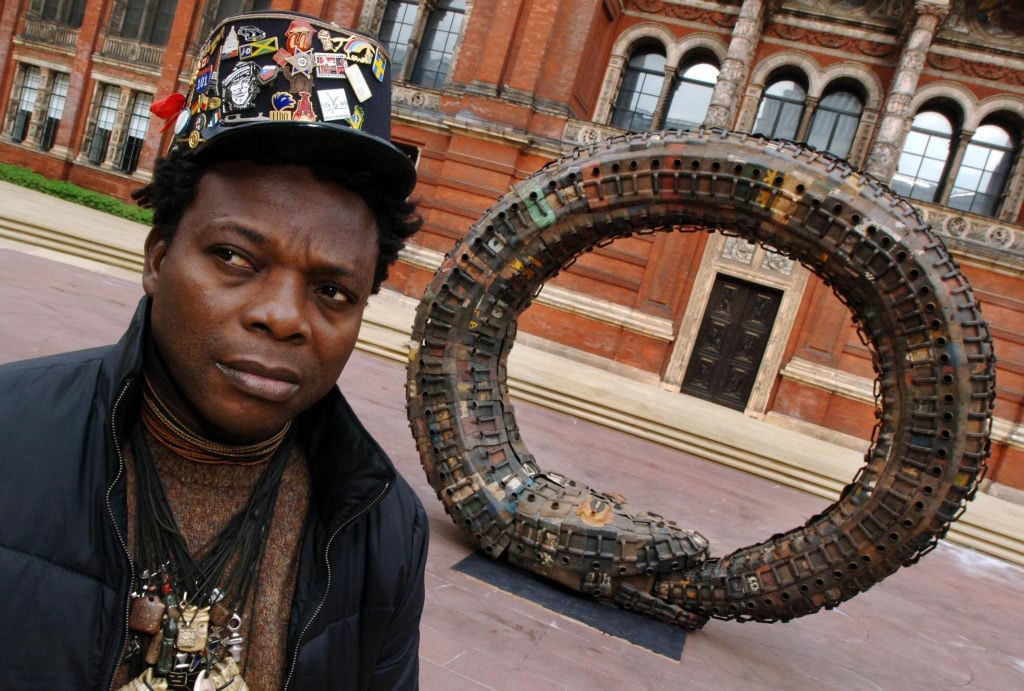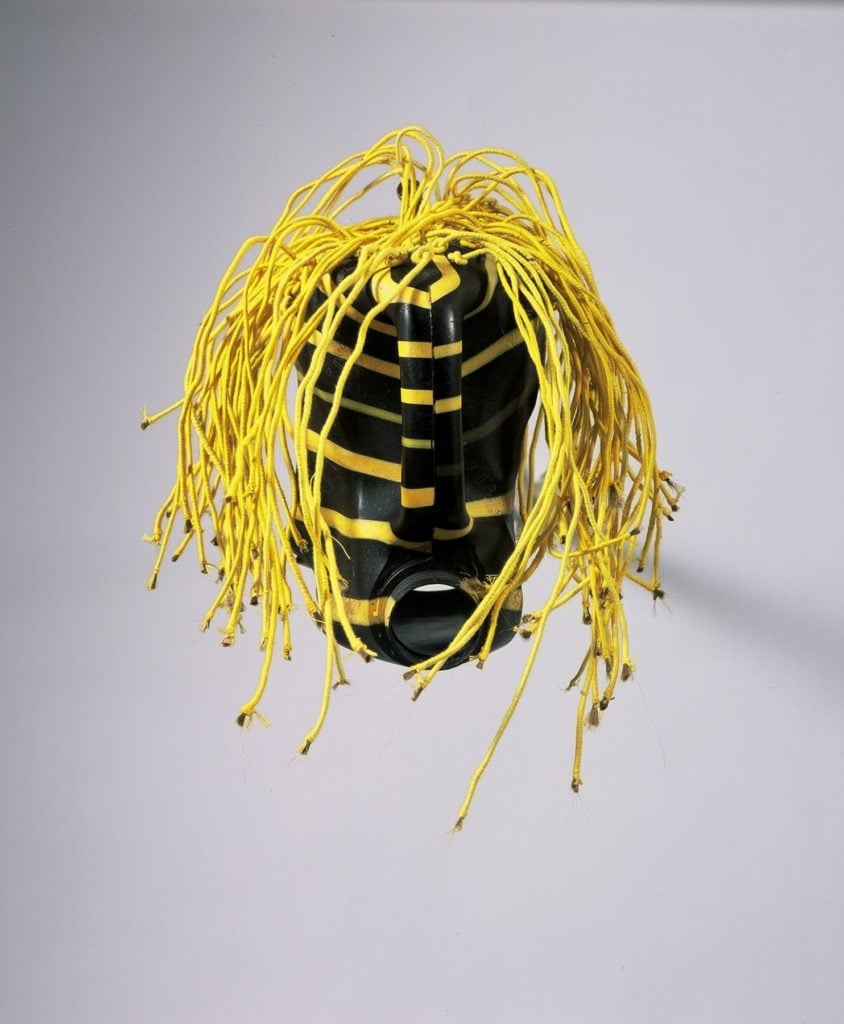Art & Exhibitions
The Artists at Benin’s First-Ever Venice Biennale Pavilion Plan to Put Restitution at the Fore
The pavilion will feature work by four contemporary Beninese artists.

The pavilion will feature work by four contemporary Beninese artists.

Sarah Cascone

Curator Azu Nwagbogu has revealed his plans for the first-ever Benin pavilion at the Venice Biennale. Titled “Everything Precious is Fragile,” the group show will feature the work of four contemporary Beninese artists: Romuald Hazoumé, Chloe Quenum, Ishola Akpo, and Moufoli Bello, each of whom has been tasked with creating site-specific work for the ocassion.
Nwagbogu, founder of Nigerian non-profit African Artists’ Foundation (AAF), will co-curate the presentation with Yassine Lassisi and Franck Houndegla, according to the German publication Contemporary And, which first reported the new details about the highly anticipated exhibition. (The biennale has seen an influx of African countries participating for the first time in recent years, including Madagascar and Ghana in 2019.)
The Benin pavilion is expected to deal with issues of decolonization, restitution, and repatriation, which have been in the news of late as Nigeria seeks the return of the Benin Bronzes, a collection of royal sculptures that the British stole during the looting of Benin City in 1897.
The historic artworks, which date to the 13th century, are scattered across some 131 Western institutions—despite growing calls to return them to Africa. (Last year, the Glasgow Museums, the Smithsonian, and the Rhode Island School of Design Museum began repatriating their bronzes, and the German government transferred the ownership of 1,100 bronzes to Nigeria.)
In Venice, the Republic of Benin hopes to highlight the ties between contemporary artists working in the nation today and its precolonial past by showcasing work inspired by the nation’s rich history and artistic traditions.
Specifically, the pavilion will draw on what’s known as the Gèlèdé philosophy, a feminist Yoruba tradition based on the wisdom of the mother, to consider today’s ecological, political, and social issues. The idea is that contemporary society can benefit from looking back to the old ways, while also strengthening connections to indigenous heritage.
Bello, for instance, is known for her figurative paintings of Black African women with blue skin, inspired in part by the Yoruba people’s traditional use of blue indigo dye in their fabrics. And Akpo uses his photography to blend reality and fiction in series that reimagine cultic practices of Benin’s Nago hunters or honor Africa’s historic queens.
Hazoumé, the most-established of the four participating artists, is best known for creating sculptures that resemble traditional African masks but are made from discarded gasoline canisters.

Romuald Hazoumé, Claudia Maigre (2005). Photo courtesy of Galerie Gmurzynska.
“I send back to the West that which belongs to them, that is to say, the refuse of consumer society that invades us every day,” he has said of the series.
Benin’s presentation in Venice comes on the heels of “The Art of Benin of Yesterday and Today: from Restitution to Revelation,” an exhibition at the at the Palais de la Marina in Cotonou, Benin, of 26 looted Beninese artifacts from the Quai Branly Museum in Paris that the nation of France agreed to restitute in 2020.
Earlier this month, AAF opened the exhibition “Dig Where You Stand: From Coast to Coast” at the Palais de Lomé in Togo. Curated by Rosemary Esinam Damalie with curatorial advisory by Nwagbogu, the show, which debuted last year in Tamale, Ghana, features contemporary African artists dealing with similar themes as the upcoming Venice project, including decolonization and restitution.
“Everything Precious is Fragile,” the first Benin Pavilion, will be on view at the 60th Venice Biennale, April 20–November 24, 2024.